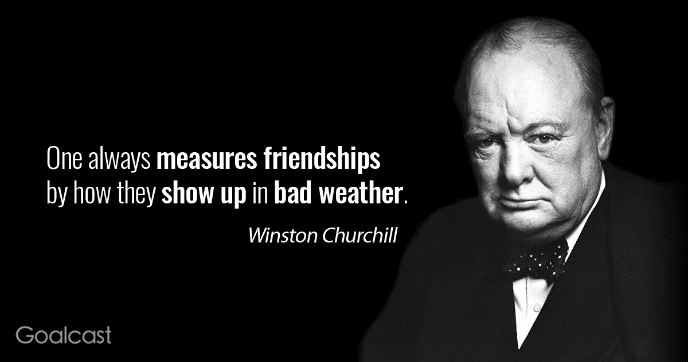In one long month, our lives have changed profoundly. A month ago, the Western world was quaking from free-falling markets and waking up to social distancing, still naïve to the human and economic toll of Covid-19. Now our eyes are open, even if our near-sightedness is acute. Daily we track death and hospitalization data, connect remotely with elderly and dying loved ones, attend to quarantined family members, don gloves and masks to  procure necessities, apply for government assistance, host digital drinks and meals, enable our cameras in online meetings, and help our kids adjust to educational careers turned upside down. We try to overcome our resentment of so many newly enforced, daily routines by echoing New Yorkers, as they lean out their windows at 7 pm to honor those taking risks to serve others.
procure necessities, apply for government assistance, host digital drinks and meals, enable our cameras in online meetings, and help our kids adjust to educational careers turned upside down. We try to overcome our resentment of so many newly enforced, daily routines by echoing New Yorkers, as they lean out their windows at 7 pm to honor those taking risks to serve others.
Yet we are still reeling, speculating at great social and temporal distance about a new normal. We look to our leaders, and ask “what comes next?” It is also time we look to ourselves and ask “what do we do next?”
The next normal will not be the new normal. Dramatic change will continue. But the next normal’s implications for B2B organizations are increasingly clear:
- Macroeconomically, we are experiencing a huge reduction in demand that, in contrast to most natural disasters, is likely to persist for an extended period.
- Microeconomically, virtually every industry is faced with specific disruption, in contrast to typical demand shortfalls where financial spigots just flow slower, then faster again.
- Government intervention, unprecedented in its speed, at best will keep some afloat in choppy macroeconomic waters, without facilitating the micro-adjustments required.
- Face to face interactions will be disrupted for an extended period, if not permanently, as travel bans and remote work rules are relaxed, then re-imposed, as new cases erupt.
- Empathy will become central to customer interactions, as all-business-all-the-time yields to collaborative, human relationships in the face of vast economic uncertainty and personal anxiety.
Business leaders who recognize and embrace these realities do not guarantee their success, but they certainly raise their odds.
Embrace the Next Normal: One Question. The next normal for B2B requires a change in how we conduct business conversations, both with colleagues and with customers. There is a single question that we should imagine any outsider, looking in objectively, will pose:
How much value do you deliver to each of your customers?

The question is both ambitious and specific. We can’t answer it with product brochures, technology descriptions, or a list of features. The answer starts with customer benefits, but it goes beyond a vague, qualitative “value proposition,” to demand a quantitative, financial Value Proposition. In order to quantify that value, we need to be specific about how we deliver value, forcing us to focus on the customer outcomes of buying our solution. Asking about each customer challenges us to be highly specific, to refine our understanding of distinct customers and segments based on more than their demographics or their use cases. To answer this question, we need to collaborate with individual customers to identify which of their problems we solve. We need to understand the specifics of an individual customer’s business well enough to demonstrate the quantitative value we provide uniquely for that customer.
The stronger our Value Proposition and the better our answers to this question, the better we will be able to engage with customers in altered circumstances and tumultuous times.
Five Steps to Improve Effectiveness. There are five steps that our Value Proposition allows us to take, that will improve business results. Here they are from the outside, looking in:
 Understand Your Customer’s Specific Challenges. Customers in almost every B2B vertical currently face common macroeconomic problems, but different verticals confront microeconomic disruptions of all shapes, sizes and durations. Customer-facing teams, who present value content specific to each customer’s business and business challenges, are required to engage that customer to identify the problems that are relevant for them. That engagement drives sales teams to empathize, as they connect specifically with customer problems and often with their human anxieties.
Understand Your Customer’s Specific Challenges. Customers in almost every B2B vertical currently face common macroeconomic problems, but different verticals confront microeconomic disruptions of all shapes, sizes and durations. Customer-facing teams, who present value content specific to each customer’s business and business challenges, are required to engage that customer to identify the problems that are relevant for them. That engagement drives sales teams to empathize, as they connect specifically with customer problems and often with their human anxieties.
 Make Your Content Customer-Centric. In turbulent personal and economic times, empathy is essential. Start by being human, continue by listening, but then make the business conversation about the customer, rather than you. Value Proposition content supports narratives and discussions that are customer-centric. Value Propositions are all about the two or three outcomes that you will deliver to the customer and how your solution delivers those outcomes in a differentiated way relative to the alternatives.
Make Your Content Customer-Centric. In turbulent personal and economic times, empathy is essential. Start by being human, continue by listening, but then make the business conversation about the customer, rather than you. Value Proposition content supports narratives and discussions that are customer-centric. Value Propositions are all about the two or three outcomes that you will deliver to the customer and how your solution delivers those outcomes in a differentiated way relative to the alternatives.
 Address Heightened Financial Standards. Liquidity has already seized up. Cash is king. Your buyer sponsors may face down-sizing themselves based on long term changes in their business model. Finance department approvals for new and existing purchases require higher standards and a stronger business case to buy. Buyers will change their buying behavior. Quantifying specific value and ROI in a Value Proposition is a way to satisfy finance objections and safeguard sponsors by making them measurably successful. The result is that sales teams increase closing rates and defend prices.
Address Heightened Financial Standards. Liquidity has already seized up. Cash is king. Your buyer sponsors may face down-sizing themselves based on long term changes in their business model. Finance department approvals for new and existing purchases require higher standards and a stronger business case to buy. Buyers will change their buying behavior. Quantifying specific value and ROI in a Value Proposition is a way to satisfy finance objections and safeguard sponsors by making them measurably successful. The result is that sales teams increase closing rates and defend prices.
 Deliver Memorable Sales Content. In the old days, when your reps were face to face, audiences still forgot 90% of a presentation after a week. Even before the pandemic, 75% of all sales calls were remote. Now, suddenly, all sales calls are remote, where those calls face 87% of buyer audiences multitasking when your team is not in the room. A recent Corporate Visions webinar highlights how slides, designed to appeal to perceptions bottom-up, improve audience retention of targeted messaging. Equally significant, Corporate Visions underscores the importance of substantive content focused on the audience’s goals, knowledge and expectations. This top-down, cognitive approach enhances what audiences remember. Value Propositions focus conversations on B2B customers’ business goals, making the content of those conversations more memorable.
Deliver Memorable Sales Content. In the old days, when your reps were face to face, audiences still forgot 90% of a presentation after a week. Even before the pandemic, 75% of all sales calls were remote. Now, suddenly, all sales calls are remote, where those calls face 87% of buyer audiences multitasking when your team is not in the room. A recent Corporate Visions webinar highlights how slides, designed to appeal to perceptions bottom-up, improve audience retention of targeted messaging. Equally significant, Corporate Visions underscores the importance of substantive content focused on the audience’s goals, knowledge and expectations. This top-down, cognitive approach enhances what audiences remember. Value Propositions focus conversations on B2B customers’ business goals, making the content of those conversations more memorable.
 Support Engaging Conversations. Engaging sales conversations limit multitasking on remote calls. The best content is participatory. The best live presentations keep audiences involved. Digital, interactive Value Propositions make remote, online meetings engaging by turning one-way content transmission into two-way, interactive collaboration. Quantified value focuses customer conversations on relevant, customer-specific needs and pain-points, enabling buyers to identify changes they should prioritize. Financial value directs customer conversations toward measurable outcomes that form a basis for customer expectations, internal approvals, and sustained customer success.
Support Engaging Conversations. Engaging sales conversations limit multitasking on remote calls. The best content is participatory. The best live presentations keep audiences involved. Digital, interactive Value Propositions make remote, online meetings engaging by turning one-way content transmission into two-way, interactive collaboration. Quantified value focuses customer conversations on relevant, customer-specific needs and pain-points, enabling buyers to identify changes they should prioritize. Financial value directs customer conversations toward measurable outcomes that form a basis for customer expectations, internal approvals, and sustained customer success.
 The Difference Between B2B Success and Failure. In the midst of so many distractions, Value Propositions should become the top priority as the next normal apporaches. Great Value Propositions provide targeted, memorable content. Selling value remotely is a way for sales to connect with customer problems, support their goals, and focus the conversation. Sales skills should be centered on sales teams evolving good, specific Value Propositions in collaboration with buyers throughout the sales cycle. Downgrade other projects that provide information about product specifications and solution features. Adding more content to sales repositories only helps sales teams inundate buyers with ever more information at a time when they already have TMI.
The Difference Between B2B Success and Failure. In the midst of so many distractions, Value Propositions should become the top priority as the next normal apporaches. Great Value Propositions provide targeted, memorable content. Selling value remotely is a way for sales to connect with customer problems, support their goals, and focus the conversation. Sales skills should be centered on sales teams evolving good, specific Value Propositions in collaboration with buyers throughout the sales cycle. Downgrade other projects that provide information about product specifications and solution features. Adding more content to sales repositories only helps sales teams inundate buyers with ever more information at a time when they already have TMI.
Value Propositions are a sales team’s silver bullet. CRM data from organizations adopting value selling show that opportunities where a Value Proposition is used (1) have 5-15% higher win rates and (2) 5-25% higher price outcomes. Value selling improves sales performance.
 The Next Normal for B2B Relationships. Buyers are looking to new vendors to demonstrate, deliver, and quantify meaningful financial results. Customers are looking to their best existing relationships for human and collaborative partnerships that help them survive and outperform over the coming quarters. We need to engage customers, socially distant though they are, with relevant content that addresses their specific challenges. A strong Value Proposition is the best content to enhance remote business relationships. Sales teams, enabling their customers to buy value during the next normal, position themselves for success when the new normal emerges.
The Next Normal for B2B Relationships. Buyers are looking to new vendors to demonstrate, deliver, and quantify meaningful financial results. Customers are looking to their best existing relationships for human and collaborative partnerships that help them survive and outperform over the coming quarters. We need to engage customers, socially distant though they are, with relevant content that addresses their specific challenges. A strong Value Proposition is the best content to enhance remote business relationships. Sales teams, enabling their customers to buy value during the next normal, position themselves for success when the new normal emerges.

